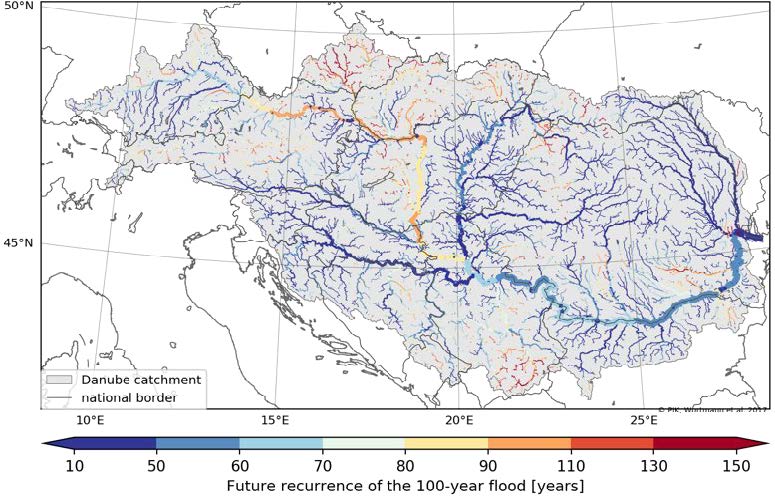SERIOUS
Synthetic design hydrographs under current and future climate for local bridge scour assessment

keywords
synthetic design hydrographs • hydrologic modelling
climate change • scour • bridge
The aim of the SERIOUS project is to methodologically link climate change to local scour by developing a methodology to assess the influence of climate change on flood wave characteristics, calculating local scour around bridge piers on this basis and comparing the reliability of the obtained results with measured values.
Project goals
1
to establish a methodological framework for determining control synthetic design hydrographs (SDH)
2
to apply and improve supervised and/or unsupervised machine learning algorithms to categorize different SDH types
3
to calibrate a regional hydrological model to evaluate climate change projections from the selected pilot areas.
4
to investigate changes in SDH under climate change projections
5
to develop a methodological framework for evaluating the impacts of climate change on bridge scour depth.
Details
Climate change leads to more intense flood events, which significantly change the morphodynamic conditions in rivers and thus jeopardize the stability of structures in the watercourse, especially bridges. Previous research has shown that methodological approaches need to be improved to reduce uncertainties in modelling the effects of climate change, hydrological modelling and modelling of local scour around bridge piers.
Within the project, methodological framework for determining control synthetic design hydrograph based on the literature review and available data in selected pilot areas in Croatia will be established, where algorithms of supervised and/or unsupervised machine learning will be used to determine the different SDH types based on the different shapes and topologies. Hydrological model with climate change projections from the CMIP5 or CMIP6 will be used to estimate changes in SDH.

The SERIOUS project will explore the possibility of establishing synthetic design hydrographs (SDH) based on a statistical bivariate analysis of flood events under current and future climate conditions in the continental part of Croatia (part of the Danube River Basin), and applying them for the assessment of climate change impacts on bridge scour at selected pilot sites.
The project results will benefit hydraulic and river engineering experts, public entities managing transportation infrastructure and bridges, as well as hydrological practices in Croatia through an improved methodology for determining SDH, which serves as input data for the design of various water engineering structures.
Institutions involved
UL FGG
Faculty of Civil and Geodetic Engineering of the University of Ljubljana
https://www.uni-lj.si/univerza/clanice-ul/fakulteta-za-gradbenistvo-in-geodezijo

UNIZG FER
University of Zagreb
Faculty of Electrical Engineering and Computing
Supported by

This project is supported by the Croatian Science Foundation under the project number HRZZ- IP-2024-05-1497. Croatian project title is “Sintetički projektni hidrogrami u uvjetima sadašnje i buduće klime za procjenu lokalnog podlokavanja oko mostova”. The project lead is Kristina Potočki. More info on the CroRIS database
Project duration
December 9, 2024 ⟶ December 8, 2027


